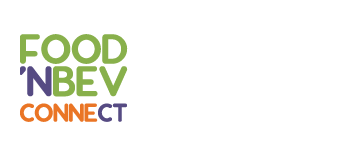Marketing Research for Early Stage and Start Up Companies
Marketing Research for Early Stage and Start Up Companies
July 8, 2020
Mark Peiser Profile
Principal consultant, PeiserMarketing LLC (established 2010, peisermarketing.com)
Consulting practice includes marketing research, statistical analysis, early stage data sources/technology
Former VP Consumer/Market Insights, News Corp, News America Marketing division
Former Director Consumer Insights, Georgia Pacific
Started career in market research at General Mills
MBA, University of Michigan Ross School of Business SB, University of Chicago (statistics, economics)
Topics
Overview of Market Research Introduction to Market Research Tools Business Applications
Services and Costs
Case Studies
Key Concepts
Marketing Research: gathers information about target markets and customers to inform decision making to drive business results
There are different types of market research. Selecting the right type of research is important to obtaining meaningful results
Types of Market Research
Quantitative
Qualitative
• Large numbers of customers
• Definitive measurements
• Limited answers
• Brand awareness
• Brand image
• Intentions
• Likes/dislikes
• Customer targets Primary
Customized for your business
Data collected about
A market and shared across brands
• Small number of customers
• No measurements
• Probing questions
Behavioral
• Sales
• Market share
• Purchase behavior
(how many buy, how often)
• General overview of an industry
• Typically not specific to a brand
Or market
Attitudinal
Syndicated
Third Party
Types of Market Research: Commonly known Services
Quantitative
• Surveys
• Nielsen
Surveys Focus Groups
Primary
• Surveys and focus groups
• Focus Groups
Behavioral
Attitudinal
Sales tracking like Nielsen, IRI Media Ratings like Nielsen Habits and Practices Syndicated
Nielsen, IRI sales data Nielsen media ratings Google Analytics
National Eating Trends (NPD)
• Mintel, IBIS
Qualitative
Third Party
Business Applications: Strategy
Consumer attitudes and product usage Consumer targets and market segments
Marketing tactics such as sources of information and interest in promotion for media and promotion strategy
Retailer shopper interest (for new distribution)
Can be quantitative and/or qualitative or even use several research tools, often focuses on psychological motivations
Business Applications: Tactics
• New product ideas/line extensions
• Product satisfaction
• Brand positioning/business concepts
• Advertising
• Flavors
• Pricing attitudes
• Packaging
• Marketing spend effectiveness
• Naming
• Distribution
Services and Costs
Research investments should be in proportion to the business opportunity; don’t spend more on the research than the long term profit potential
Costs depend on
Research tool
For surveys:
Source of qualified customers (own list vs. third party survey panel) Difficulty of finding qualified customers
Number of customers
Amount of data collected (number of questions)
Client service (writing questions, data analysis, etc.)
Estimated Costs: Tactical
Tactical survey – Survey Monkey platform – no client service
– Using a customer list (if you have emails) no cost under Survey Monkey
– Purchasing survey samples via Survey Monkey
– Client service would include questionnaire development and data analysis
– If a product test, account for cost of product
Sample size (50% incidence)
Estimated Costs: Tactical (with full service)
Tactical survey – ECI full service vendor
– Purchasing survey samples
– Client service includes questionnaire development and data analysis
– If a product test, account for cost of product
Estimated Costs: Other
Strategy Research – target development, general category attitudes, etc.
– Typically uses 250-500 customers
– Client service includes objectives/strategy development,
– questionnaire development, data analysis and business implications
– Depending on qualifications, cost is approximately $5-8,000 (as a benchmark, large
marketers spend $75,000 or even more for more elaborate strategy research)
Qualitative research
– Informal interviews can be done at no or low cost
– Professionally conducted focus groups typically cost $3,500+ or greater
– Note that qualitative is appropriate for exploratory purposes, but not providing definitive
answers
Behavioral (Syndicated) research
– Ongoing sales tracking can cost $50,000+ depending on scope and support;
– One time data pulls can be less
Third Party
– May be available at no cost through Connecticut Small Business Development Center
Case Study 1: Kelly’s Four Plus Granola
• Business Issue: Line extensions with functional benefits such as energy, immunity
• Recommendation: Tactical research survey
– Consumers are screened for target requirements (200 respondents at 50% incidence)
– Rate each functional benefit for purchase interest
– Approximate cost $1000 (includes some consulting support on questionnaire design etc.)
– If conducted among current customers using their Four Plus email list, cost would be even lower
Measure Purchase Intent
Tactical 200
Survey respondents
Benefits Concepts
Cost $1000
Case Study 2: Maia Yogurt
• Business Issue: After a market hiatus, Maia is re-entering the yogurt market. The category has changed due to many new entries. Maia needs to understand target market and other go to market tactics in light of the changes.
• Before conducting research, look for industry publications on the yogurt market through the CT small business development center
• Recommendation: Strategy survey with some tactical questions
– Consumers are screened for target requirements (300 or 600 to include subgroups at 35% incidence)
– Collect attitudes and behavioral data for the category
– Include Maia benefit statement to report results from consumers interested in Maia
– Assess match of consumers to Maia benefit to identify most promising target
– Tactical questions such as package graphics options
– Approximate cost $8,000 for 600 respondents, $4,500 for 300 respondents; consulting support is recommended for this type of research
Strategy 300 to 600 Attitudes/ Tactical Cost $4,500
Survey Respondents Behavior Topics to $8,000 Maia concept
Case Study 3: Fire ox
• Business Issue: Fire Ox is launching a line of frozen vegetable entrees and some grocers have said they will accept the brand if they can be sold at a $ 7.99 price point, but to make necessary margins, they may need $ 8.49 or $ 8.99 to be successful financially…how can they use some research to help them understand their pricing and positioning?
• Recommendation: Tactical survey among target consumers who shop at the grocers (recommend survey sample for each grocer)
– Consumers are screened for target requirements (300 per grocer, assumes large retailer like Whole Foods or Stop and Shop)
– Show product concept
– Half see $7.99 price point, half see $8.99 price point
– Measure purchase interest
– If higher price is not a significant barrier to interest, use results to show each grocer that the higher price point is acceptable to their shoppers
– Approximate cost $2,000 for two grocers
Tactical Survey
300 interviews Fire Ox Test $7.99 Measure Cost $2000
Per grocer concept and $8.99 price Purchase Intent For 2 grocers points
Summary
Market Research can help your business more effectively meet customer and retailer needs
There are many market research tools to address information needs. It is important to select research tools that
– Are appropriate for the business issue and will provide meaningful results
– Are worth the investment (comparing research cost to business opportunity)
– Are affordable and actionable
If possible, seek advice on research initiatives
Questions: contact Mark Peiser; website: peisermarketing.com




